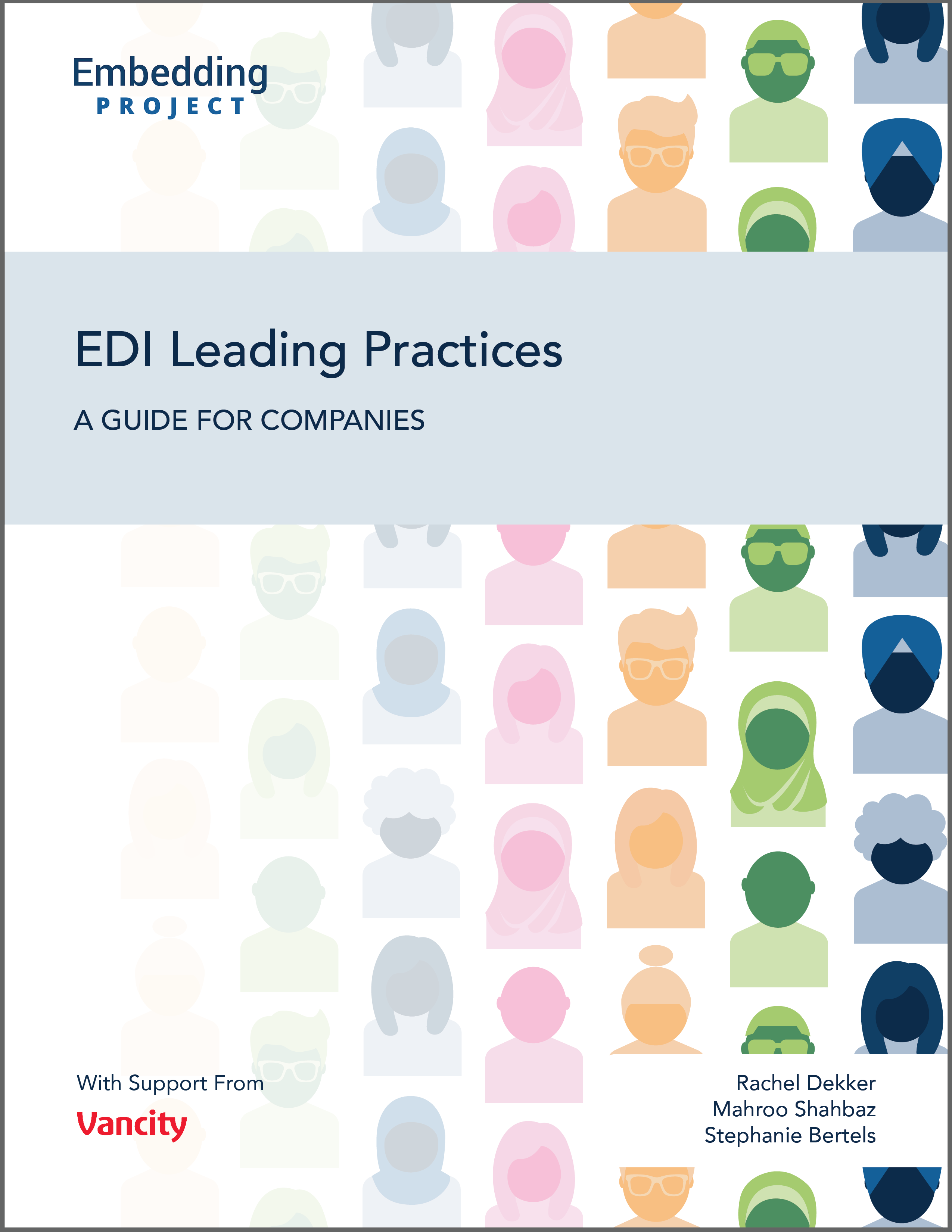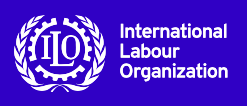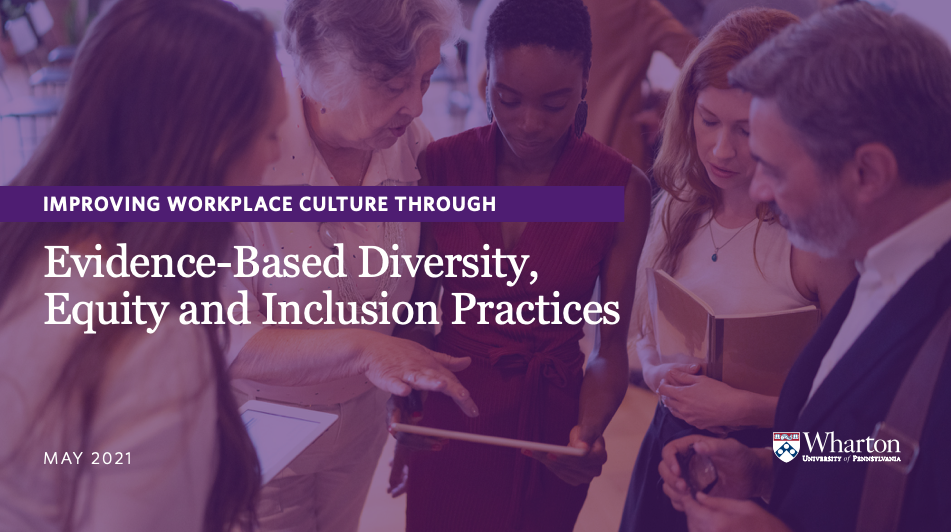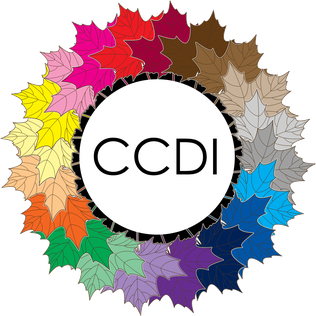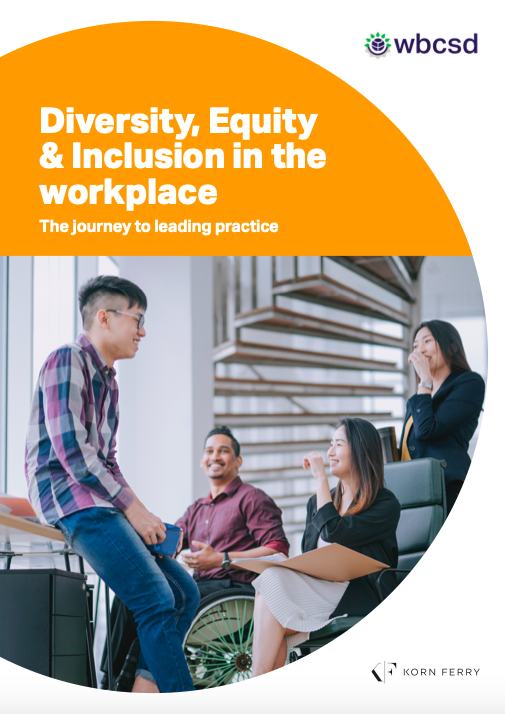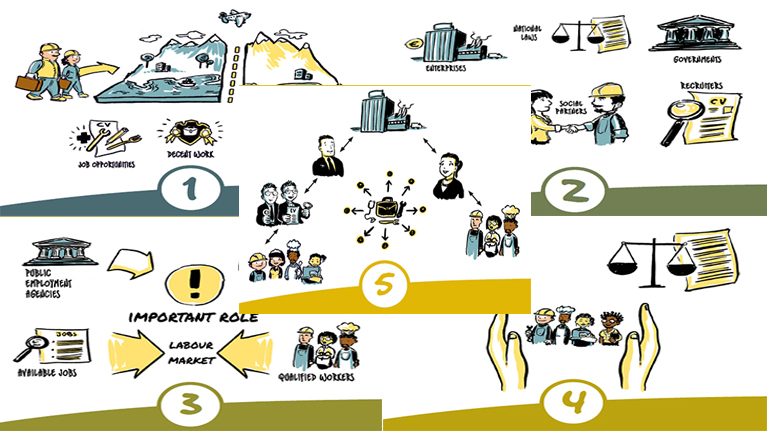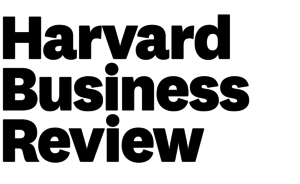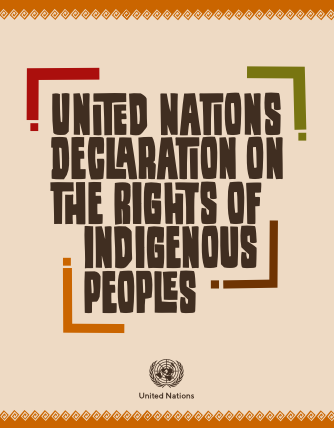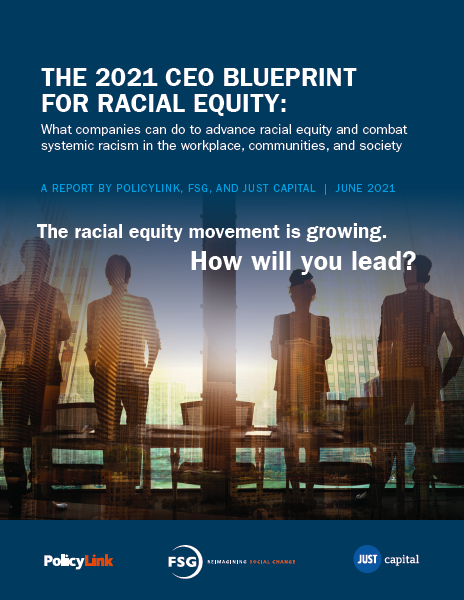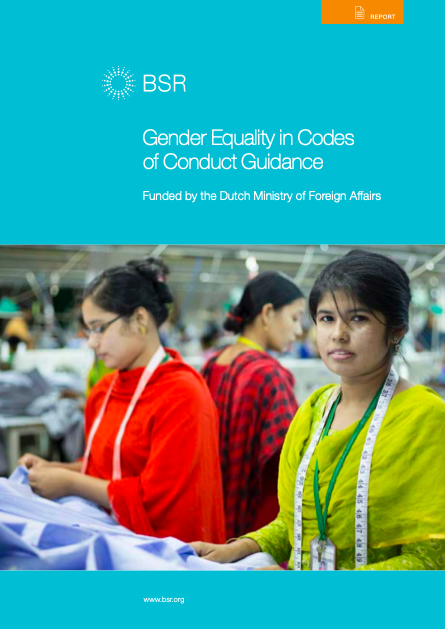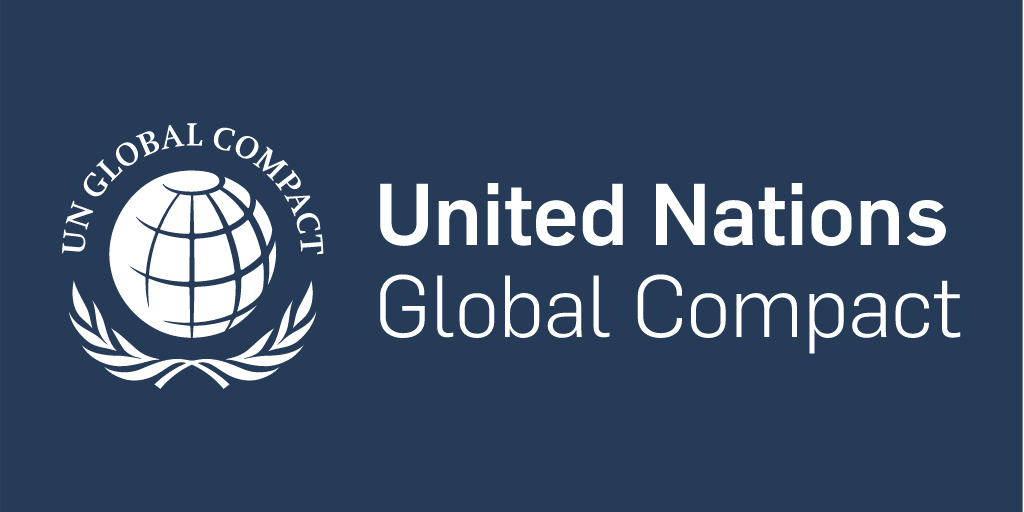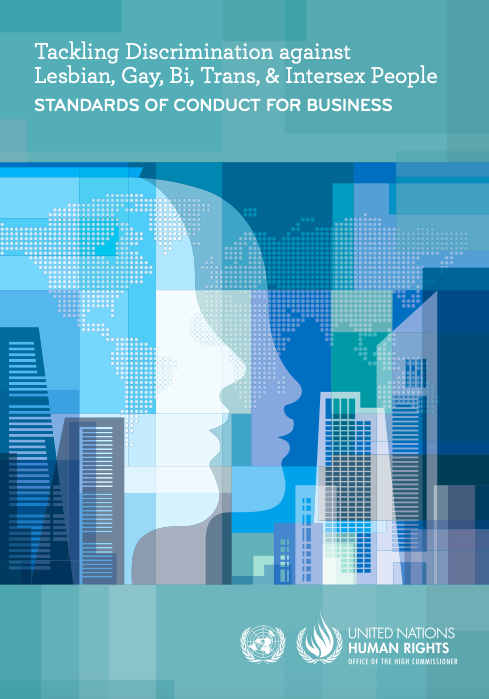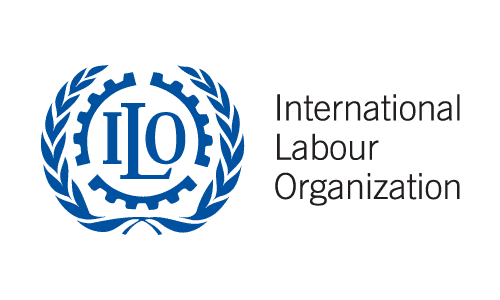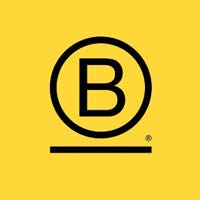Respectful and Inclusive Workplace Culture
Description
In an inclusive and respectful workplace, workers enjoy freedom from discrimination, freedom of opinion and expression, freedom of thought, conscience, and religion, and the right to privacy. The company ensures appropriate policies, practices, safe and accessible feedback mechanisms, internal narratives regarding inclusion and diversity. Company leaders help build and maintain a respectful and inclusive workplace culture and model these behaviours. In this workplace, Indigenous Peoples, persons living with disabilities, women, individuals who identify as LGTBQIA2S+, persons belonging to national or ethnic, religious, and linguistic minorities, as well as migrant workers, older workers, and other equity-seeking groups feel safe, able, and welcome to be themselves and are able to express or engage in religious practices, beliefs, and observances as well as the cultural practices of Indigenous Peoples, including through work schedule accommodations.
Share this Subissue on:LinkedIn
Resources
Corporate Action and Disclosure
EDI Leading Practices: A Guide for Companies
Workplace equity, diversity, and inclusion (EDI) is a complex and rapidly evolving space, and increasingly, companies are interested in understanding how to meaningfully advance EDI in their organisations. To help them do so, we consulted EDI research and guidance, reviewed practices of over 100 companies, and sought input from practitioners across a range of industries and geographies. Our Equity, Diversity, and Inclusion Leading Practices Guide offers a comprehensive framework with practices, case studies, and resources to help organisations embed EDI into their strategy, structures, and culture.
Tools and Resources for Business on Non-Discrimination and Equality
The International Labour Organization's tools and resources for business on non-discrimination and equality provides guidance that will help you support equity related to gender, age, HIV/AIDS status, and disabilities, as well as understanding the rights of Indigenous and tribal peoples.
Improving Workplace Culture Through Evidence-Based Diversity, Equity and Inclusion Practices
This report, completed by researchers led by Stephanie Creary at The Wharton School of the University of Pennsylvania, explores the relationships between workplace culture and business outcomes. It presents results from the U.S Distributed Workforce Sample, which serve as a foundation for informing managerial action on diversity, equity, and inclusion, and provides key findings and recommendations for middle managers responsible for implementing related initiatives. If you or our organisation are new to effecting DEI-related change, this research may help you to fine-tune the focus of your actions.
Inclusive Workplace Competencies
This paper from the Toronto Region Immigrant Employment Council (TRIEC) can help you and your team develop the competencies needed to build a more diverse and inclusive workforce. The guide lays out a set of 15 diversity and inclusion competencies that are categorised into three spheres of influence: “within myself," “within my team," and “within my organisation, workplace, or community." Each competency outlines the performance criteria required to demonstrate competence. In addition, foundational knowledge underpinning each competency is identified, and brief examples of what the competency might look like in practice are provided. This resource is most relevant to HR and DEI practitioners, especially in areas where the workforce increasingly consists of immigrants.
Canadian Centre for Diversity and Inclusion
The Canadian Centre for Diversity and Inclusion (CCDI) has created a range of reports, resources, and toolkits to help you with advancing equity and challenging racism in the workplace. These resources include leadership and workplace guides that focus on creating inclusive and safe spaces, as well as step-by-step toolkits that explain how to navigate race in the workplace and develop a diversity and inclusion strategy. Although much of the CCDI's content is written from a Canadian context, most of their insights and lessons are universally relevant.
Diversity, Equity & Inclusion in the workplace: The journey to leading practice
This report from the World Business Council for Sustainable Development (WBCSD) explores some of the key DEI challenges faced by companies from WBCSD's Future of Work working group. It presents the case for focusing on and advancing DEI in the workplace; explores solutions that the companies in WBCSD's working group have implemented in their pursuit of leadership in this space, with a specific focus on identifying and sharing practical approaches to building more progressive workplaces; and explores emergent leading DEI practices and some of the factors that enabled successful mainstreaming.
Establishing Fair Recruitment Processes: An ILO online training toolkit
In cooperation with the International Labour Organisation, the REFRAME project has created a comprehensive series of interactive, modular training materials and manuals on fair recruitment to support the development and implementation of fair recruitment practices. The modules can help you to understand why fair recruitment matters; monitoring and enforcement of recruitment regulations; and business and private sector engagement for promoting fair recruitment.
Tackling inequality: The need and opportunity for business action
This short report is a good introduction to inequality, and can help you to better understand the responsibility and opportunity that your business has to support positive change. Developed by the Business Commission to Tack Inequality, the report explains how inequality is an urgent systemic risk for business, highlights the case for business action, and presents a six-part agenda for action.
Migrant Worker Management Toolkit: A Global Framework
This flexible toolkit from BSR can help you better manage migrant worker issues across diverse business contexts. It is based on a three-step framework for developing a comprehensive migrant worker orientation program. This framework includes understanding the key issues and risks affecting employers and workers in your business context; finding a credible, independent external organisations to support the development of the orientation program; and building capacity within operations by educating workers on their rights and available grievance mechanisms. This highly practical toolkit offers relevant standards, examples, checklists, questions, and recommended actions for each step, and will be most useful to supply chain practitioners and facility managers.
Workplace Diversity & Inclusion: What Every MBA Needs to Know
This primer provides a helpful high-level summary of diversity and inclusion that will benefit executives, board members, and other business leaders. It explains the present-day context of diversity and inclusion, both within the workforce and in senior leadership roles; and highlights both the risks of inaction and the opportunities provided by advancing DEI, such as by improving hiring practices, advancing managerial accountability, and creating and supporting employee resource groups.
7 Metrics to Measure Your Organization’s DEI Progress
This article from HBR that will help you gather data needed to track your organisation’s progress towards managing your people fairly, based on merit. Grounded in the author’s first hand experience, it proposes seven key metrics spanning the employee life cycle. These are: attrition, performance, promotions, leadership pipeline, employment pipeline, pay equity, and inclusion. The measurement framework provided will be most useful to HR departments within organisations committed to addressing Diversity, Equity, and Inclusion (DEI).
Racial Equity
Racial Equity Tools
Racial Equity Tools has compiled a vast library of resources that will help you to understand and advance racial equity within your organisation. The library is arranged into four broad "themes," including fundamentals, such are core concepts, the history of racism and movements, data, and resources; planning that examines key issues, such as economic security and language justice; acting to find strategies and advocate for ending structural racism and advancing social change; and evaluating progress and results.
Corporate Racial Equity Tracker
Just Capital's Corporate Equity Tracker provides a way for people to easily access and view the racial equity commitments and actions taken by organisations. Once on the website, users will have the ability to sort their searches based on the company, industry, number of employees, or policies.
United Nations Declaration on the Rights of Indigenous Peoples (UNDRIP)
Adopted by the General Assembly in September 2007 by a majority of 144 states in favour, the United Nations Declaration on the Rights of Indigenous Peoples establishes a universal framework of minimum standards for the survival, dignity, and well-being of the Indigenous peoples of the world, and elaborates on existing human rights standards and fundamental freedoms. The declaration provides a trajectory for advancing lasting reconciliation with Indigenous peoples, and it should be used to inform any statements, policies, or practices related to Indigenous Peoples that your organisation is developing and implementing.
2021 CEO Blueprint For Racial Equity
This resource from PolicyLink provides a roadmap that can help companies understand and address the intended and unintended consequences of their products, policies, and practices on people of colour. The guide seeks to advance racial equity by providing key recommendations across three domains of corporate influence: within the company, within relevant communities, and at the societal level. It also includes profiles of companies whose work is advancing equity in these three spaces. This guide is a good starting point for leaders and agents of change who want to advance their business from simply "not racist" to deliberately and credibly "anti-racist."
Anti-Racism Business Resource: Commit and Act
This guide from B Lab can help your business adopt anti-racist business practices. The first section introduces the role of business in tackling racism, and the second section highlights actions you can take using examples from the B Corporation community. It includes recruiting and hiring practices, understanding the history of systemic racism and unconscious bias, and practicing allyship. The insights provided will be most beneficial to Human Resource practitioners.
White Supremacy Culture in Organizations
This guide from the Centre for Community Organizations will help you spark conversations about oppressive culture in your organisation. It describes five dimensions of white supremacy culture that fuel exploitative behaviours and decision-making. These include the narrow view of perfectionist culture; paternalism; the practice of concentrating - and refusing to share - power; defending the status quo; and avoiding the discomfort of confronting racism. This resource also features practical guidance on how to counter white supremacy culture. This guide will be most useful to change managers, sustainability professionals, and HR practitioners seeking to positively influence the underlying cultural frameworks that guide decision-making.
White Supremacy Culture
White supremacy culture can manifest in subtle ways within the workplace, such as through perfectionism, defensiveness, paternalism, and individualism. This primer will help you to understand and better identify problematic attitudes and behaviours, and to proactively build a more inclusive, collaborative, and supportive environment.
What Companies Can Do to Combat Systemic Racism Against Black Colleagues in the Workplace
The physical, emotional, and economic safety of Black Americans is constantly threatened by the participants and beneficiaries of systemic racism. This article, written by JUST Capital, presents a list of concrete and actionable steps that people within organizations can take to address systemic racism and support the physical, emotional, and economic safety and security of Black Americans. Five primary actions are presented, including supporting the Black Lives Matter Movement; providing a safe and supportive work environment; assessing the workforce; examining practices; and conscientious recruitment.
How To Build an Anti-Racist Company
Action is the key difference between being not racist and being anti-racist. This article can help leaders to reimagine their approach to developing a fully inclusive culture. Adapted from the book Anti-Racist Leadership, this article introduces 7 proactive steps that can help you to get started in rooting out discrimination and advancing equity in the workplace.
Gender and Sexuality
Women's Empowerment Principles
Established by the UN Global Compact and UN Women, The Women's Empowerment Principles (WEPs) serve as guidelines that will help your leaders, HR professionals, and change agents to promote gender equality and empowerment in the workplace. Adopting these principles involves six main stages: Consider, Sign, Activate, Engage, Sustain, and Report. Towards helping you understand and progress through these stages, the WEPs has created a comprehensive brochure that features tools, examples, insights, and other resources.
Global Gender Gap Report 2024
This comprehensive report from the World Economic Forum can help you understand the gap in workforce gender parity over time. The first part examines the gender gap between countries and where progress has been made in recent decades, and the second part examines economic and leadership gaps and explores the ways in which they're constraining growth and skewing the technology transition. This guide will be most useful to senior leaders and HR professionals interested in understanding and challenging gender inequity within their business and beyond.
Progress on the Sustainable Development Goals: The Gender Snapshot 2023
This report from UN Women and UN DESA provides a comprehensive analysis of gender equality progress across the Sustainable Development Goals, and can help you to better understand how the world is failing to achieve gender equality. It highlights trends in extreme poverty, food insecurity, violence, and more, and explains how the vulnerability of women and girls will be exacerbated by climate change. The report advocates for an integrated, holistic approach to advancing gender equality, and will be of particular benefit to sustainability and strategy professionals who want to better align their company's positions, goals, and actions with the work that much be done to advance gender equality globally.
UN Women Digital Library
This library from UN Women provides briefs, manuals, guides, discussion papers, case studies, and more on a wide range of topics relating to gender equality and the empowerment of women, including economic empowerment, ending violence against women and girls, employment, leadership and political participation, and more.
Gender Equality in Codes of Conduct Guidance
This guide from BSR provides a framework for the implementation of good working conditions, and in particular for women. It explores the topic of mainstreaming gender equality, and especially within codes of conduct, and introduces nine principles that will help you to integrate gender equality considerations into the standards you use both internally and within your supply chain. Each principle features a summary, case studies, and recommended revisions and opportunities for leadership.
The gender gap in employment: What's holding women back?
This resource from the International Labour Organisation provides an approachable introduction to the gender gap in the labour force, relating to employment rates, wages, available opportunities, and more. This is a good primer for helping executives and senior leaders to better understand the persistent challenges and barriers that women face, the pressures they face to conform to gender role expectations, and their employment-related preferences.
UN LGBTIQ+ Standards Gap Analysis Tool
This free tool will help you to strengthen policies and processes that advance LGBTIQ+ inclusivity and tackle discrimination within the workplace. lt uses a gap analysis methodology and questionnaire to provide recommendations based on the maturity of your journey.
Tackling Discrimination against Lesbian, Gay, Bi, Trans, & Intersex People: Standards of Conduct for Business
This guide was created to support rights-affirming interactions between companies and a wide range of stakeholders, and it is a good starting point for businesses looking to review or establish policies and practices that respect and promote the human rights of LGBTI people. It provides five concrete steps, examples of best practices, case studies, and other practical guidance to companies on how to respect and support the rights of LGBTI people in the workplace, marketplace, and community. The standards are grounded in existing international human rights law and align with the UN Guiding Principles on Business and Human Rights.
Transgender Inclusion in the Workplace: A Toolkit for Employers
This toolkit from the Human Rights Campaign Foundation can help you to make your company safer for and more inclusive of transgender persons. It covers a range of policies and practices you can apply to improve inclusivity in your organisation’s day-to-day operations, including best practices for navigating gender inclusion in gendered spaces; proactive gender transition guidelines; inclusive healthcare coverage; and addressing organisational culture through training and education. There is also an extensive section reserved for examples that illustrate the everyday realities of transgender inclusion. The guidance will be especially useful to Human Resource departments and any roles responsible for championing and advancing diversity and inclusion.
Breaking barriers: Unconscious gender bias in the workplace
Pressure is mounting on businesses to pursue social equity and address and reduce disparity in opportunities within the workplace, but many companies struggle to identify and prevent the causes. This research note from the International Labour Organization will help you to better understand unconscious gender bias and the barriers it creates for women’s career advancement, as well as how to mitigate and overcome the effects. The report explores how such bias manifests in the workplace and includes methods, metrics, and training tips for addressing the issue.
Principles for Responsible Banking Guidance Document: Gender Equality Target Setting
This document will help you to begin setting credible goals around gender equality in the workplace. It introduces high-level steps, such as establishing baselines, and includes examples of the philosophy and process behind conceiving and delivering upon such gender equality-related targets.
Although this document focuses on setting targets for gender equality within the context of retail banking, the principles and examples are broadly applicable.
Empowering Women at Work: Company Policies and Practices for Gender Equality
This resource from the ILO and UN Women can help you to promote gender equality in your workplace. It focuses on five key areas where companies can contribute: achievement of equal pay for work of equal value, prevention and elimination of violence and harassment, creating a harmonious work-life balance for both women and men equal representation of women in business and management roles, and investment in a future of work that works for women. Each section highlights key international labour standards, guiding principles for companies, and illustrative practices.
Accelerating Systemic Change Toolkit
This comprehensive toolkit from the UN Global Compact was created to help you advance gender equality, diversity, and inclusion within your organisation.
The toolkit is divided into three sections. The first features a consultation report that provides qualitative and quantitative data on the gendered impacts of the pandemic, explains the challenges women in the workplace are navigating, and hightlights how other identity factors - such as race, age, and immigration status - can further complicate their professional ambitions and experience in the workplace. The second section features reminders and tips for building capacity for gender equality work and ensuring that more women (or members of other equity-deserving groups) rise to hold leadership roles. The final section features a series of case studies of organisations responding to the challenges and barriers identified by women and non-binary individuals in the consultation sessions.
Women in the Workplace 2024: The 10th-anniversary report
Since 2015, McKinsey & Company has conducted annual studies on the state of women in corporate America. This report consolidates these findings to provide insights into workplace gender diversity trends and solutions. It is divided into four sections: the first three cover the increase in women’s representation, the expansion of company efforts, and the lack of progress reported in women’s lived experience, and the final section outlines research-based tips and strategies to help companies improve. This resource will be most useful to HR teams.
Other Resources
What is DEI? Market Signals of Diversity, Equity, and Inclusion
This report from Rights CoLab can help you better conceptualise diversity, equity, and inclusion (DEI) and how it can be measured. Based on a study of 21 DEI frameworks, the report outlines a methodology and shares insights on common themes found across the frameworks. It also examines the different groups that are targeted as beneficiaries of DEI efforts, highlighting how existing frameworks continue to overlook those at greatest risk of exploitation, and provides recommendations for addressing these gaps. This resource will be most useful to change agents, HR professionals, and supply chain managers.
Inclusive Language Guide
This comprehensive guide from Oxfam can help you understand how to reframe your language to be more inclusive. It takes a critical look at language and how it can be used to empower new narratives and challenge problematic ideas. The guide explores a range of themes, including the power of language; feminist principles for language use; disability, physical, and mental health; gender justice, sexual diversity, and women’s rights; migrations; and race, power, and decolonisation. For each theme it provides examples of how you can put inclusive language into practice in writing and day-to-day conversation. This resource may be especially useful to communications specialists and HR teams that can use it to inform employee onboarding and training.
Ally: A Title You Earn Through Action
This article from B The Change can help you understand how you can be an ally to marginalised groups. It outlines five individual level actions you can take to create an environment of acceptance in your workplace and beyond. These actions are: understand your privilege; listen, empathise, and learn; amplify marginalised voices; support local communities; and speak up and act. This guidance is widely applicable, and will especially benefit change agents working in organisations that have recognised and voiced the need to improve inclusivity.
Disability in sustainability reporting
This guide by Disability Hub Europe can help you make your organisation more inclusive of disabled persons. It covers the role of business in strengthening disability inclusion across the value chain and provides technical guidance for disclosing disability issues in alignment with the latest GRI Standards (as of 2023). This resource will be most useful to your sustainability and human resource departments.
Harnessing the Power of Age Diversity
This article explores how a lack of trust between older and younger workers contributes to a culture of resentment that sows division and impacts productivity. It offers a four-part framework to help you manage an age-diverse team and better integrate their skills, knowledge, and networks. This framework includes identifying assumptions, adjusting your lens, taking advantage of differences, and embracing mutual learning.
Neurodiversity as a Competitive Advantage: Why you should embrace it in your workforce
Employers often overlook the candidacy of people with neurological conditions, despite the extraordinary skills they may bring to the workplace. This article explains the benefits of pursuing and accommodating neurodivergent talent, and explores why companies often fail to recruit and support these peoples. It also highlights HR programs and efforts to access neurodiverse talent, including the use of non-interview assessment processes, setting up support systems, and scaling and mainstreaming neurodiversity programs.
Hiring Justice-Involved Talent: Practical Steps to Becoming Second Chance Employers
This roadmap published by the Responsible Business Initiative for Justice (RBIJ) can help you understand the benefits of recruiting persons with criminal records – an inclusive practice known as Second Chance Hiring (SCH). The roadmap is grounded in three pillars: business and employer education; identifying the right community-based organisations and re-entry partners; and workforce development for Second Chance employees. This tool will be most useful to HR teams interested in developing more inclusive hiring practices.
Due diligence in the downstream value chain: case studies of current company practice
This guide by The Danish Institute for Human Rights can help you address human rights risks in your downstream value chain. This includes how your product or service is used by customers and end-users; the working conditions in your distribution network; and end-of-life impacts. The guide explains downstream value chains and their importance, potential human rights issues, and how companies can address them. It also provides a series of seven case studies demonstrating downstream human rights due diligence in practice. These insights and examples will be most useful to sustainability, logistics, and supply chain management teams.
Eliminating Violence and Harassment in the World of Work
This new global standard (C190) from the International Labour Organization (ILO) can help you understand the public policy measures needed to end violence and harassment in the workplace. It is the first international treaty to “recognize the right of everyone to a world of work free from violence and harassment.” Although it is for national governments to implement, business can learn from the core principles outlined and the accompanying video series. Additionally, its adoption has implications for business sustainability. This standard will be most relevant to sustainability as well as legal and compliance teams.
Disability Equality Index: Best Practices Collection
This collection of best practices assembled by Disability:IN can help you to better understand how to advance disability inclusion in your organisation. The collection features over 170 practices from companies participating in the Disability Equality Index (DEI). It showcases leading examples and promising practices that all companies can learn from, regardless of how far along they are in their disability inclusion journey. These practices are grouped into eight categories: culture, leadership, enterprise-wide access, employment practices, community engagement, supplier diversity, global operations, and getting started with disability inclusion. This resource will be most useful to HR practitioners.
Investing in Inclusion: A handbook for businesses on disability-inclusive education, training, and employment
This handbook from Global Business Coalition for Education (GBC-Education) will help you understand how your organisation can improve education, training, and employment for young people with disabilities. It begins with an overview of disability inclusion. Then it lays out the multiple overlapping ways businesses interact with persons with disabilities and the actions they can take to support inclusion. Next, it shows how to foster an inclusive workplace and provide disability-inclusive education and training. Lastly, it highlights the opportunity for business to serve unmet needs of the large consumer base that is made up of persons with disabilities. This resource will be most useful to HR professionals and anyone seeking to advance disability inclusion.
